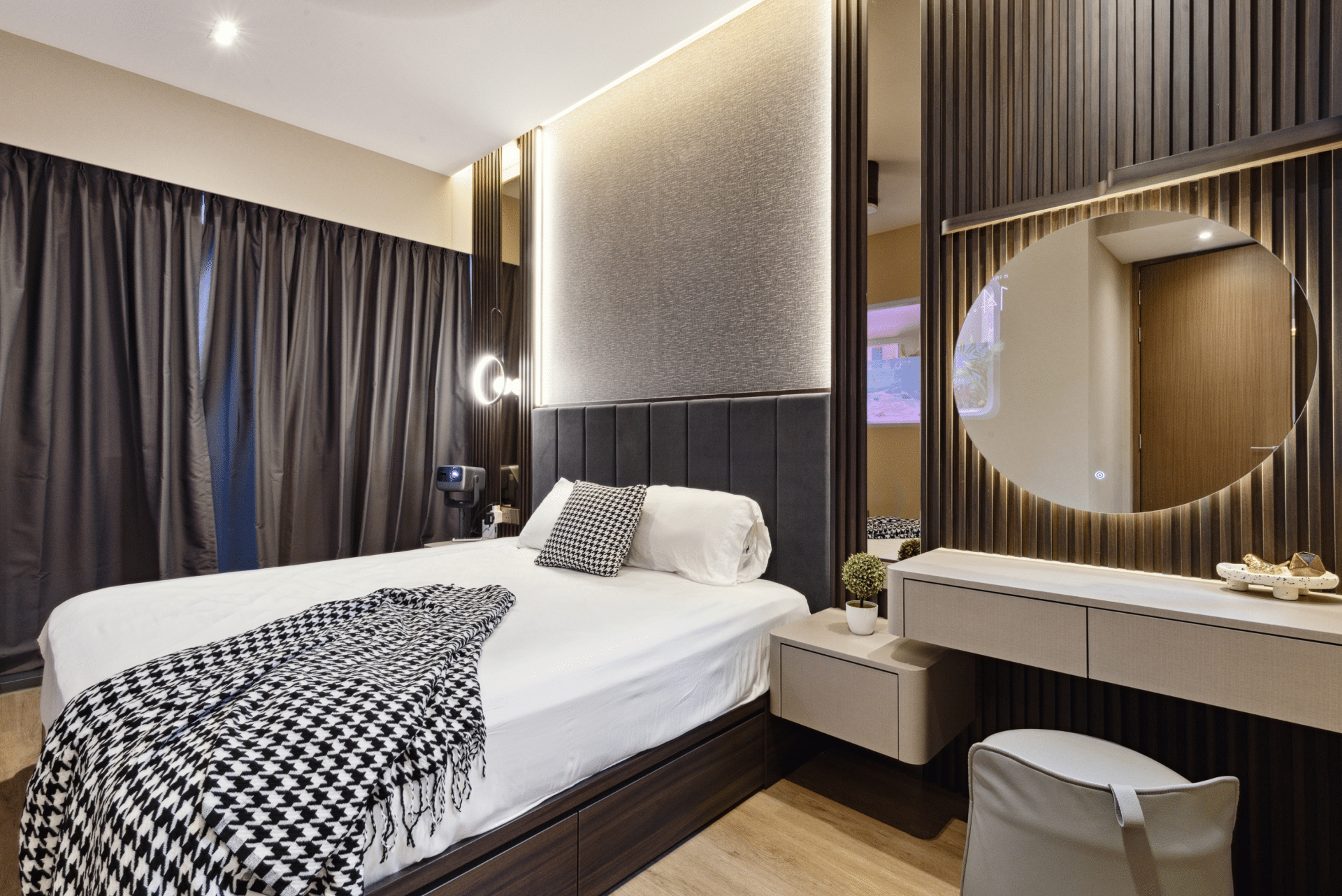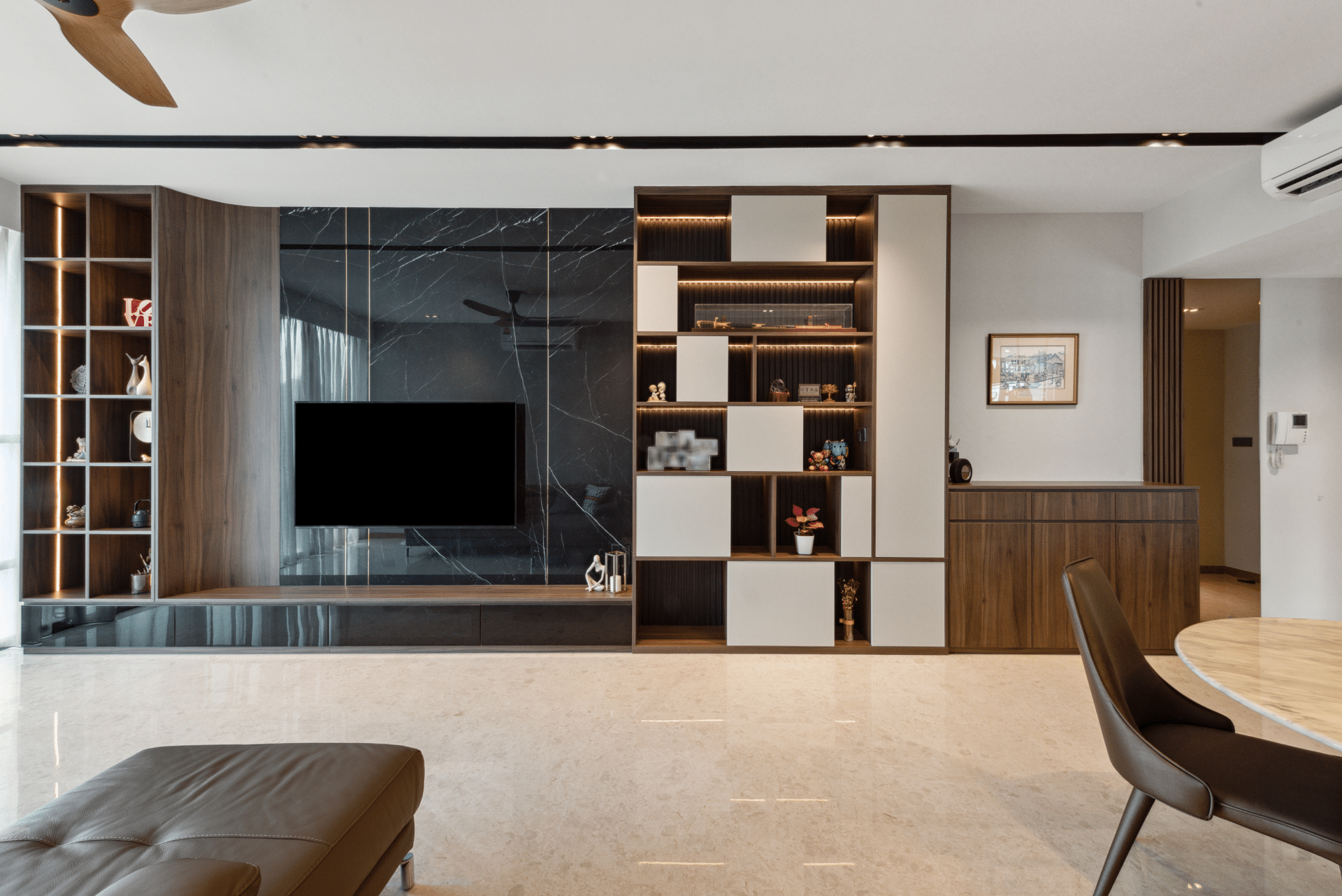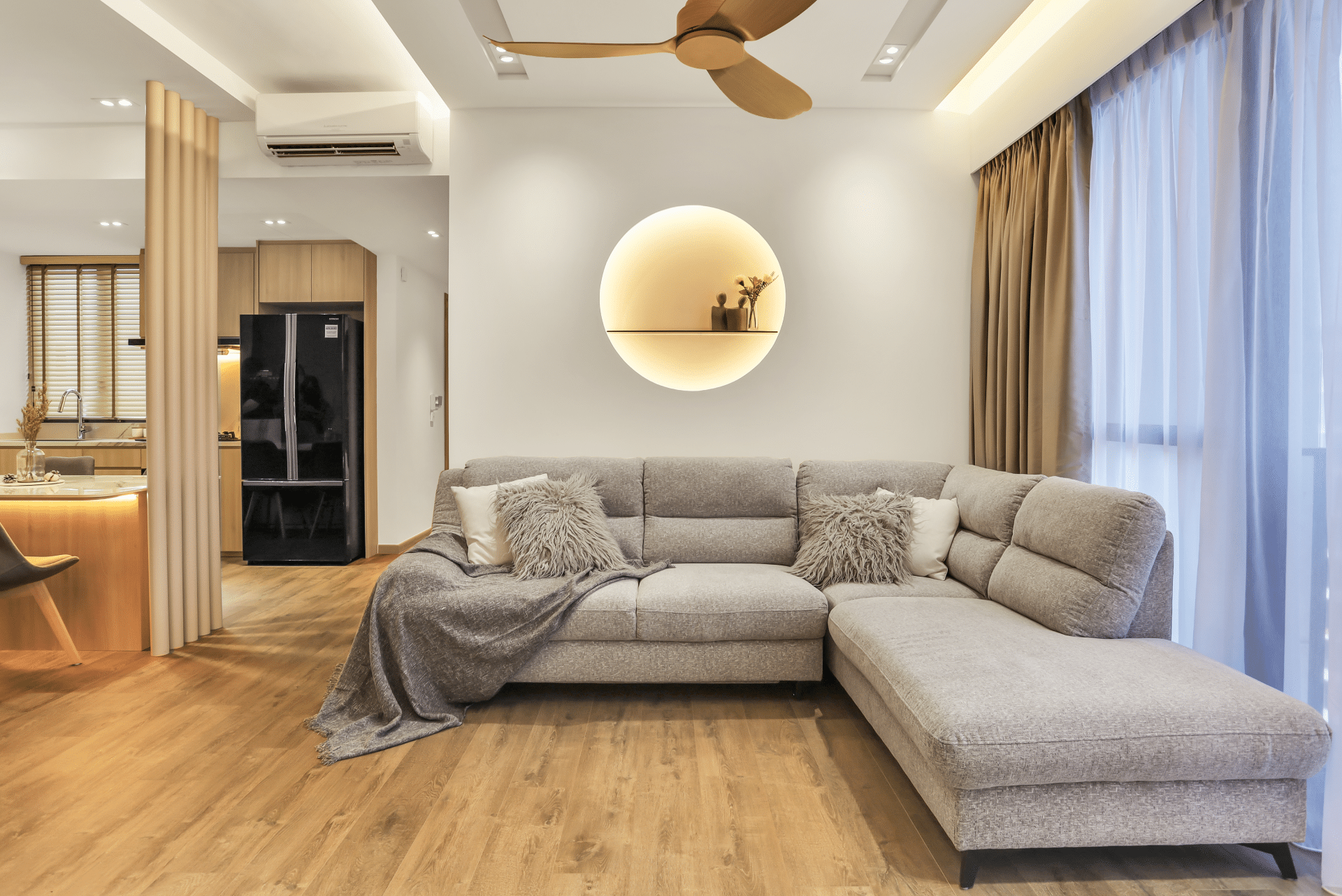Top Benefits Of Smart Home System In Singapore
A smart home employs internet-connected devices and systems to automate and control things like lighting, temperature, security, entertainment systems, and more. This can provide homeowners with conveniences like being able to turn lights on or off remotely, adjust thermostats without getting up, and monitor their home security cameras from a smartphone. In this blog, we will definitely discuss the benefits of a smart home system.
The Future Of Smart Homes
Given current growth trends, Singapore’s smart home market should continue flourishing over the next decade. In the previous decade, there was a slow welcome for smart homes in Singapore. However, households desire more intelligent, responsive environments that support convenient, healthy lifestyles. Tech advancements drive customer expectations higher each year. Service providers must actively enhance offerings to exceed accelerating demands. Smart homes look to completely transform domestic life in Singapore soon.
Smart home adoption expands rapidly across Singapore each year. Implementation costs vary based on household needs and technical scope. Gradual upgrades allow more homeowners to participate. Market analysis predicts over 90% penetration by 2028. Technological innovations should further revolutionize what intelligent home systems can achieve in the near future. Singaporeans clearly embrace smart living solutions that benefit family wellness and streamline domestic responsibilities through automation.
Key Components Of Smart Home System In Singapore
Constructing a smart home system requires various components to work cohesively. Understanding the vital tech pieces allows customization to suit specific households. Here’s an overview of the key components of smart homes in Singapore.
-
Smart Home Hub
The smart home hub functions as the core processor. It links smart devices, enabling communication. Prominent platforms like Samsung SmartThings, Apple HomeKit, and Google Home seamlessly integrate respective ecosystems. The hub runs automation rules, triggers actions, and consolidates sensor data. Control happens via mobile apps, voice assistants, and touchscreens. It’s the central brain coordinating everything.
-
Smart Speakers
Smart speakers with top Amazon Alexa and Google Assistant provide hands-free voice control. They allow adjusting lights, thermostats, and entertainment systems through voice commands. You also get weather updates, calendar reminders, and more. Smart speakers deliver quick, convenient system interaction.
-
Smart Lighting
Smart bulbs like Philips Hue are a common starting point. Features like dimmable, color-changing LEDs create the desired ambiance remotely. Automating lighting also aids security when away. Motion sensors triggering lights entering a room improve convenience. Smart lighting enhances aesthetics, mood, and efficiency.
-
Smart Switches/Plugs
Smart plugs, power outlets, and light switches enable remote appliance/device control. You can turn electronics on/off or schedule them via the smart home app. Some models track energy consumption, too. This reveals usage patterns to cut costs and identifies excessive energy draws. Smart switches and plugs simplify control and monitoring.
-
Smart Security
Smart security uses components like door/window sensors, cameras, motion detectors, and smart locks. Brands like Ring, Nest, and Eufy help safeguard homes. You can remotely monitor activity via live feeds and get alerts about suspicious events. Smart locks enable keyless entry through codes, fingerprints, or phones. Robust security camera systems deter intruders and provide peace of mind.
Key Aspects
Many brands now offer full suites of compatible smart home products. Assessing different platforms’ strengths and weaknesses matters. Key aspects to compare include:
-
Choosing Compatible Ecosystems
With varying brands offering distinct devices, ensuring ecosystem alignment matters: Smart speakers and displays must interact easily with chosen lights, switches, and other gear. Amazon Alexa and Google Home predominate. Similarly, doorbell cameras should integrate flawlessly with door locks and security systems.
Smart speakers answer queries, play media, and control other smart devices via voice commands. The plunge into connectivity often starts by installing an Amazon Echo or Google Home. As needs become clearer, other realms like climate and security may take priority. But robust smart homes grow over time; walking before running remains the smartest approach.
-
Main Growth Factors
Several key factors drive the proliferating smart home market in Singapore. Expanding Internet of Things networks allows more device interconnectivity. AI and machine learning improve automated reasoning. Smart voice recognition enables intuitive verbal device controls. Blockchain technologies heighten security. 5G implementation speeds connectivity and response times. Customer experiences should only improve with technological advancements.
-
Paying Attention To CyberSecurity
While the convenience of smart homes keeps increasing, so do associated cyber risks. But homeowners can mitigate them: Use strong, unique passwords for every device and online account.
Password managers help create and store login credentials securely.
Enable two-factor authentication when available to add a second credential layer before access. Routinely patch and update all smart gadgets, routers, hubs, and apps to the latest firmware and software. Out-of-date tech containing vulnerabilities poses risks. -
Gradual Implementation Options
Some homeowners prefer equipping their homes gradually with smart products over time. Beginning with one or two devices allows learning management apps without high upfront expenses. Additional integrations synchronize smoothly later as budgets allow. Staggering costs over months or years works better for certain financial situations. Patience pays off ultimately with a fully integrated, high-functioning smart home environment.
-
Subscription Packages
Some providers offer bundled smart home subscriptions with equipment costs combined with monthly fees. Packages cater to essential needs or more advanced functions. Overall expenses depend on the package level selected. Subscriptions simplify costs into consistent monthly bills.
-
Market Segmentation Trends
While the general smart home market grows exponentially, certain segments see faster adoption rates. Safety and security systems remain a top consumer priority. Energy monitoring and efficiency capabilities also rank highly in Singapore’s tropical climate. Entertainment and convenience integrations, like multimedia and remote access, are popular with younger demographics. Analyzing market segments assists providers in targeting products and services.
The Numerous Advantages Of Setting Up A Smart Home
Installing a smart home system can make life simpler, more convenient, and more enjoyable in multiple ways. This advanced technology connects various appliances and devices in your household to the internet and allows you to control them remotely. After initially setting up the system, you gain the capacity to manage numerous functions at the click of a button or just with a simple voice command.
-
Saving Time And Effort In Day-to-Day Tasks
The time and effort required of users on a daily basis. For example, a significant advantage involves reduced expenditures of time and energy in daily activities. You can perform such tasks quicker, which are done otherwise at length, by using a phone app or a virtual assistant such as Siri. For example, you can warm up the house before reaching home from work, brew a pot of coffee in the morning, turn lights on and off at will, and even check whether appliances are still switched on when leaving home. To this end, it has become so convenient for busy people.
-
Enhanced Home Security And Peace Of Mind
Besides, smart home devices discourage thieves and other criminality while you are out. Simulating occupancy can be achieved by switching on the lights intermittently and turning them on/off from different locations, as well as by switching the electronics periodically. You can use surveillance cameras to record any suspicious or strange movement on your premises, and they can send alerts to your smartphone.
It provides safety for your family and personal belongings by so doing. Furthermore, they will alert you on possible leaks, smoke, carbon monoxide, or any danger as soon as it happens, regardless of your location. These alerts, in particular, offer greater certainty and confidence.
-
Customization For Ideal Ambiance And Preferences
Smart home systems can also be customized to fit your distinct preferences. Smart hubs and apps enable the programming of lighting colors, patterns, music, and temperatures to ensure an ideal mood and atmosphere anywhere in your house. Access to family/friends is convenient, and it locks out unwanted people with keyless entry systems. Moreover, you may even set up automated pet food dispensers and self-cleaning litter boxes for your furry friends in the absence of the owner. With such flexibility, you can customize how the tech is molded to fit your needs, of course, at a cost.
-
Savings On Utility Bills And Energy Usage
Installing smart thermostats, power outlets, and light bulbs can also help minimize utility expenses. You will waste less electricity by powering devices on and off remotely based on schedules and occupancy detection. Smart sprinklers and irrigation systems will conserve water as well. In addition, integrating solar panels and smart meters allows you to monitor energy consumption and identify ways to increase efficiency. Every bit of savings contributes to lower bills and less environmental impact.
-
Expandability And Interconnectivity With Other Smart Devices
Furthermore, smart homes allow expandability to include even more automation and functionality down the road. As more advanced options and cutting-edge inventions launch, you can continually upgrade and add voice assistants, security components, entertainment centers, kitchen appliances, fans, shades, and countless other solutions.
New devices will seamlessly sync and communicate with existing ones through the central platform. This interconnectivity will continue improving and simplifying the management of everyday household duties and activities. Home entertainment plays a major role in many households. Smart home technology takes music listening, movie watching, and gaming to new heights for an immersive experience. Entertainment enthusiasts appreciate the expanded options and convenience factors.
-
Connected Living
Smart homes enable greater connectivity between household members. Family members can communicate with each other via intercom systems. Smart calendars and reminder systems can be shared to coordinate schedules and activities among family members. Such connected living solutions improve communication and bonding for busy modern households. They help families stay in touch and on the same page.
-
Home Security
They are highly beneficial in terms of safety in smart homes. They also make it possible to keep tabs on your home when away. There are even security cameras that provide a live feed that can be watched on your mobile device. It also has features that allow you to set up alerts so you get notified of movements and sounds. This ensures that you are aware of any funny happening and take immediate response.
Check if doors and windows are closed tightly at all times. It enables one to give virtual keys to visitors, allowing them to enter your house when you are not around. In addition, smart sensors designed for leakage detection, smoke, carbon monoxide, or broken glass can also alert homeowners and emergency services quickly. It also makes sure that there is no extensive property damage and provides safety measures.
-
Fun And Entertainment
While it may not be a necessity, smart homes can certainly liven up a household. Smart speakers make it easy to play music anywhere in the house. Letting technology shoulder the burden of mundane chores provides you extra freedom to focus on what matters most. Automating security precautions, ambiance, preferences, and energy use also enables peace of mind, comfort, and savings. Finally, expanding and upgrading the system over time will exponentially increase those valuable benefits.
Final Thought
Constructing a smart home takes careful thought and planning. There are many devices and systems to evaluate. You want technology that works for your lifestyle and budget. The possibilities for home automation and control keep expanding. With deliberate upfront planning, you can implement great smart home solutions tailored precisely to how you want to live. We hope this blog post about the benefits of a smart home system will be helpful.



